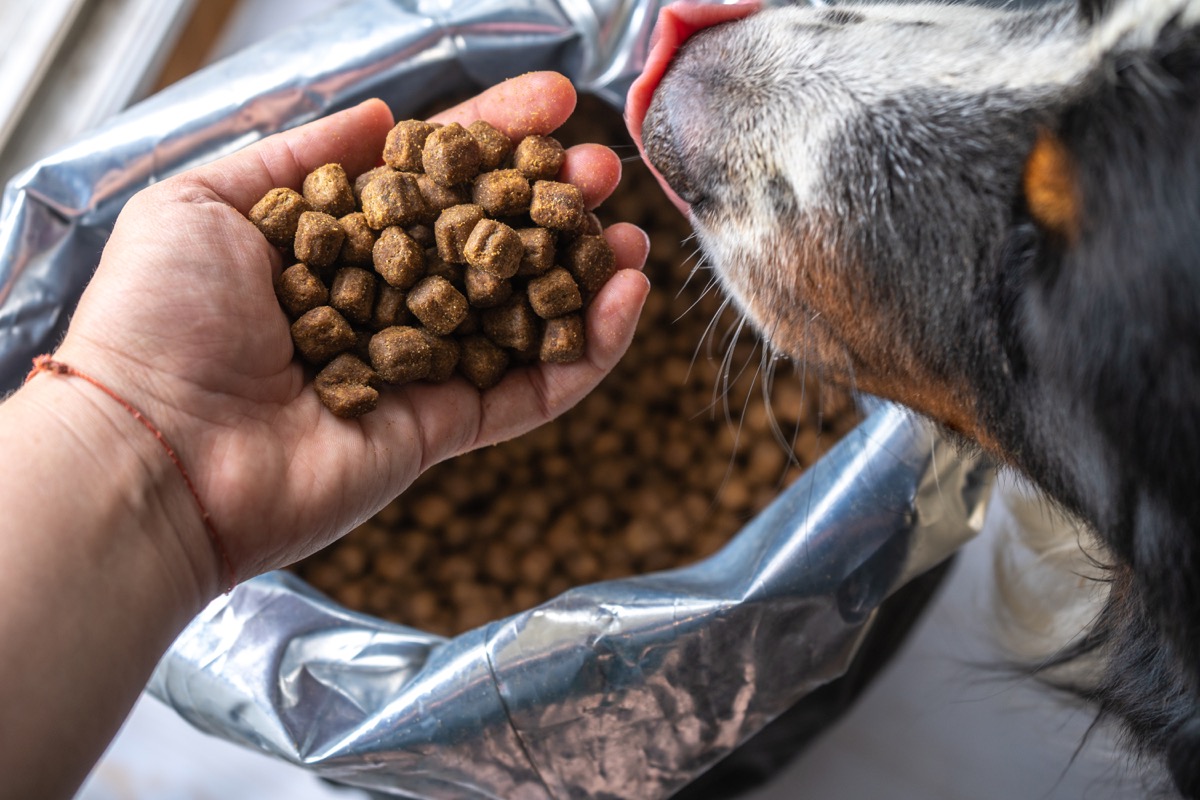8 Foods That Are Attracting Mice Inside Your Home

Your kitchen is the center of all things food-related in your home. Unfortunately, certain items you stock in your pantry could be inviting some unwanted guests of the rodent variety to dinner. If you’re already battling an infestation or are simply looking to avoid one, it’s essential to know which foods in your kitchen are simply irresistible to pests. Read on to see which foods attract mice to your home.
RELATED: 8 Surprising Things in Your Yard That Attract Mice to Your Home.
8 Foods That Attract Mice
1. Chocolate

Keeping a stash of treats in your cupboard is an absolute must for anyone who has a sweet tooth. But according to Terminix, “Of all the foods included on the mouse menu, chocolate is hands-down the favorite.”
But don’t fret; you can still keep chocolate around as long as you store it properly. “Thin cardboard boxes, thin cellophane, plastic bags, or paper bags can all be easily compromised by mice,” Timothy Best, technical manager for Terminix, tells Best Life. “Using rigid plastic or glass containers with tight-fitting lids will help keep items from ‘attack.'”
2. Fruits and vegetables

Getting plenty of fruits and veggies is an important part of any human’s diet, but it turns out that fresh produce can also be alluring to rodents. Experts say mice are especially fond of the food they can find in nature.
“The top food that we find brings mice into your home is fruits and berries,” Wade Beatty, owner of Western Pest Control, tells Best Life. “Mice often eat from raspberry and blackberry bushes, as well as apple and pear trees in the wild, so this food source is one they tend to look for within your home. These rodents are drawn to the smell and sweetness of fruits, so make sure there are no rotting fruit or fruit remains left around your kitchen.”
RELATED: 6 Places Mice Love to Hide in Your Basement.
3. Nuts

Nuts are a staple in kitchen cabinets. Unfortunately, they also happen to be as popular with pests as with people.
“One of the top foods that drive mice to your home is nuts,” explains Tony Salerno, owner of Tony’s Pest Control. “Mice love peanuts, walnuts, almonds, and various other nuts. This snack is high in protein and is a great food and energy source for mice. If you’re finding these rodents in your home, check to make sure any nuts you have stored properly in sealed containers or bags.”
4. Peanut butter

Terminix says that following chocolate, peanut butter is a mouse’s second favorite food. It’s full of protein and is the perfect combination of carbs and sweetness that will ultimately give them the energy they need.
“Mice are attracted to the strong smell and added sugar in peanut butter,” says Manish Jain, owner of Ministry Cleaning. It’s best if you keep it stored high and in a jar rather than in lower areas of your pantry.
RELATED: 9 Cleaning Habits That Attract Spiders.
5. Seeds and grains

Seeds and grains are a kitchen mainstay. Unfortunately, having them in your pantry could be providing mice with an ample supply of one of their favorite foods. According to Orkin, mice “prefer foods that are higher in carbohydrates,” which includes grains and seeds.
But there’s no reason to ban them from your kitchen altogether: Just make sure to store items like rice, quinoa, popcorn, chia seeds, lentils, sunflower seeds, faro, and barley in airtight glass jars or plastic containers instead of in their original bags or boxes. You should also make sure to clean up any debris left behind in your cupboards from broken or leaky containers.
6. Cereal and granola

Matt Smith, owner and licensed professional pest control technician at Green Pest Management, explains that sometimes mice prefer carbs over protein depending on what their body is lacking. Therefore, foods like cereals, granola bars, or crackers are very enticing.
“Mice will chew through boxes and bags really quickly,” cautions Smith, so you should always be putting these items in airtight tupperware or glass containers.
For more helpful tips sent straight to your inbox, sign up for our daily newsletter.
7. Meat

While it’s unlikely that mice will make their way into your fridge, meat is still a major draw if it’s left lingering in the trash after being thrown out.
“Most people might not know that rodents are omnivores,” John Carney, founder and president of SafeSpray Pest Control, tells Best Life. “We suggest throwing away any meat scraps and leftovers in a sealed trash bag and taking it to the curb as soon as possible. The smell of rotting meat can draw rodents into your kitchen.”
And it’s not just those steak scraps in the trash that could draw in pests: Dried meats can be equally appetizing to mice and other rodents.
“If you have beef jerky lying around your kitchen, make sure to store it in an airtight, plastic container since it is very pungent and will bring mice into your home,” says Jerry Hebert, owner of Extermatrim.
8. Pet food

It’s your duty as a pet owner to keep your furry friends well-fed. However, it’s equally important that you’re not accidentally leaving out their food for mice or other rodents to snack on.
“Storing pet food in open bags, on the floor, in your kitchen pantry is a recipe for a rodent problem,” notes Denise Trad Wartan, general manager of Trad’s Pest Control. “Pet food should be stored in plastic tubs so it blocks the smell from rodents and makes it harder to access.”